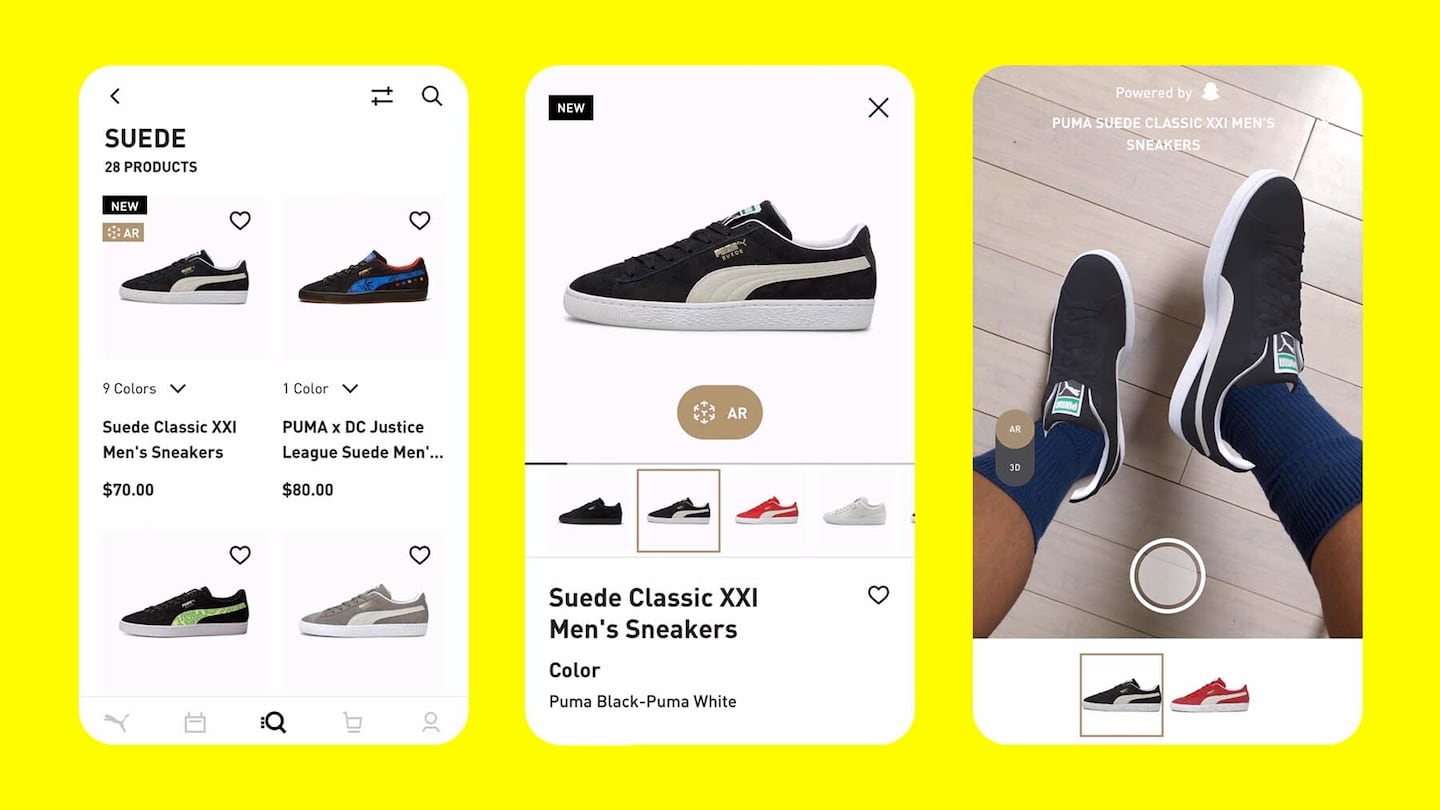
The Business of Fashion
Agenda-setting intelligence, analysis and advice for the global fashion community.

Agenda-setting intelligence, analysis and advice for the global fashion community.

At the end of April, I took a trip to Snap’s headquarters in New York to figure out whether Snapchat had any real shot as a shopping app. I had been lured to Times Square with the promise of testing out new augmented-reality tech to virtually “try on” luxury clothes and accessories.
Snap rolled out its latest set of tools on April 28, including new AR creation tools that allow brands to transform any product in its catalogue into an augmented version on Snapchat and a camera application for brands’ own e-commerce websites. Brands ranging from Dior to American Eagle have signed on to use Snap’s AR technology.
As I stood in front of a lifesize iPhone screen, the version of myself I saw reflected back in the camera wore a black Rains trenchcoat. I flailed my arms to get a sense of how good the camera was at capturing how a garment might move on my body in real life; I pulled my arms behind my head to try to lift the hood; I reached for the zipper, which appeared in the camera to be right at my collar bone.
None of these attempts worked perfectly, but it was clear to me that if Snap could incrementally improve on its foray into AR shopping, it might really be on to something here.
ADVERTISEMENT
Fashion and beauty brands have dabbled with AR technology for years, most efforts appearing to be dubious and with mixed results. For some, the technology has improved and expanded beyond a virtual lipstick test (which Sephora has been offering since at least 2017.) Gucci’s app, for example, offers AR try-on for sneakers and beauty, allows you to change the colours of products and offers a link to purchase directly from the app. In February, Bottega Veneta flirted with AR when it launched an app that is more a marketing play than it has so far been useful to the user.
The value proposition to fashion and beauty brands to use augmented reality tools is simple enough: when they are successful, they help reduce return rates, improve return on ad spend and improve brand awareness. (The eyewear brand Zenni Optical, for example, has a Snapchat Lens that has driven more than 60 million virtual try-ons to drive a 42 percent higher return on ad spend compared to Lenses without it, according to Snapchat.) But creating 3D and AR versions of products requires a brand to have access to the technology to do so or the money to tap a third party for help. And after all that, consumers still have to actually use the tools.
Snapchat’s journey into AR is perhaps the best attempt out there so far. As of January 2021, more than 250 million people have engaged with AR Shopping Lenses on Snapchat more than five billion times.
The new tools are aimed squarely at brands. All they have to do to create AR Lenses on Snapchat is upload a product SKU to their existing Snapchat asset manager (the place where paid ads on the platform are handled), and Snapchat transforms the product into the AR version of it.
Shoes and accessories seem to be best primed for virtual try-ons so far. At home, after returning from the Snap offices, I’d decided to keep testing virtual products. There were a pair of suede Puma classic trainers that looked real enough on my feet, though I wondered how lightweight the shoes were, whether my heel would rub against the back or if the toebox was too narrow. I tried on a pair of white acetate Fendi frames but wondered whether they would sit too snugly on the bridge of my nose. Finally, I took a quilted taffeta Dior bar jacket for a spin around my kitchen, matching crossbody slung over my shoulder, though the AR version of the $3,900 jacket didn’t make me feel as luxurious as the price would suggest.
The real success, for brands, if not for Snap, is that even though I didn’t buy anything, I kept trying things on and wondered, “should I see how this feels in real life, too?”